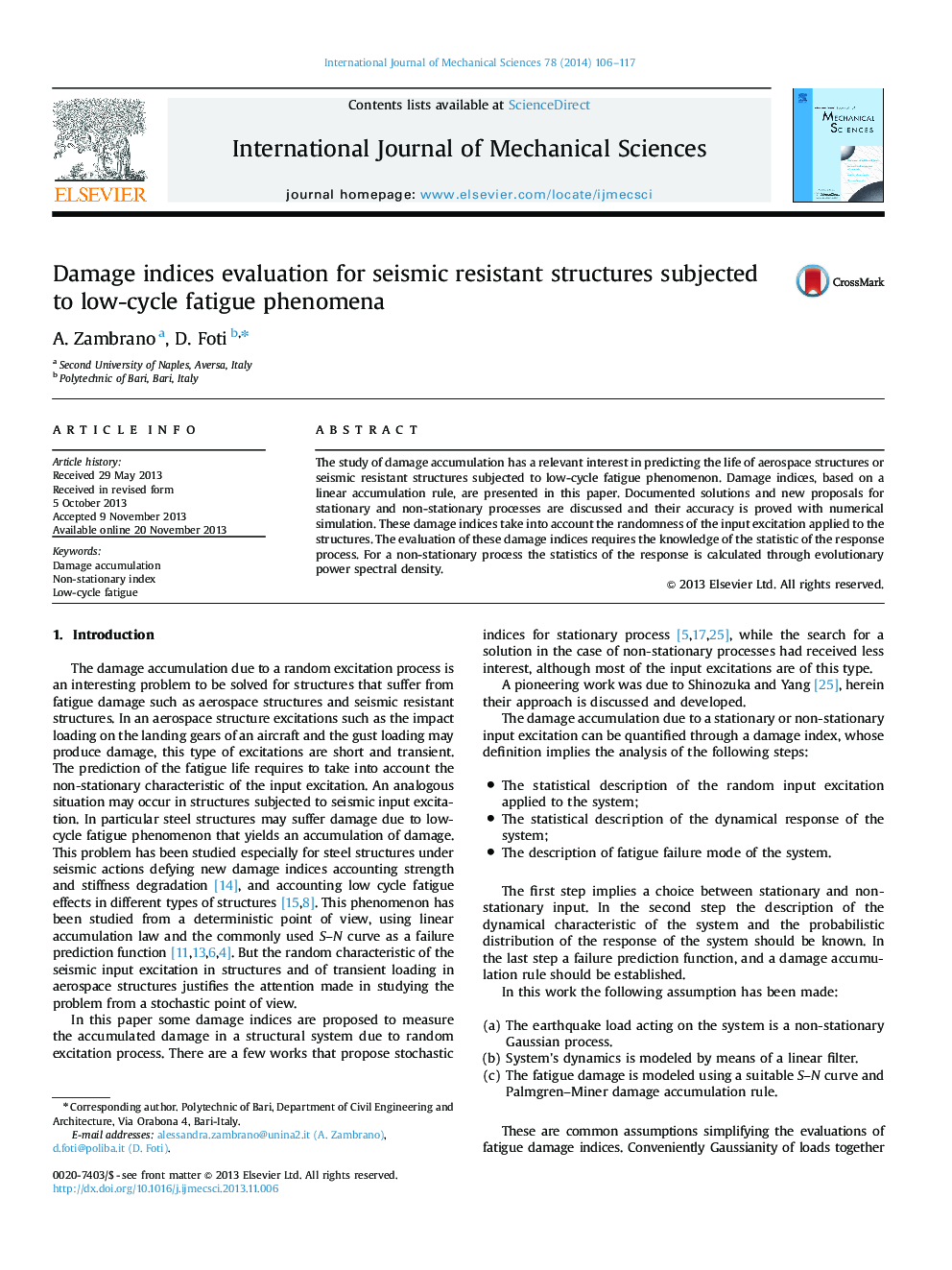| Article ID | Journal | Published Year | Pages | File Type |
|---|---|---|---|---|
| 780172 | International Journal of Mechanical Sciences | 2014 | 12 Pages |
•Different damage indexes, based on a linear accumulation rule, are presented to obtain a failure prediction function.•Different probabilistic distribution density functions of the peaks in the dynamical response have been assumed.•The statistics of the response is calculated through evolutionary power spectral density in case of a non-stationary process.•Two damage indexes for stationary processes and four damage indexes for non-stationary processes are discussed.•The accuracy of these indexes is proved through simulation.
The study of damage accumulation has a relevant interest in predicting the life of aerospace structures or seismic resistant structures subjected to low-cycle fatigue phenomenon. Damage indices, based on a linear accumulation rule, are presented in this paper. Documented solutions and new proposals for stationary and non-stationary processes are discussed and their accuracy is proved with numerical simulation. These damage indices take into account the randomness of the input excitation applied to the structures. The evaluation of these damage indices requires the knowledge of the statistic of the response process. For a non-stationary process the statistics of the response is calculated through evolutionary power spectral density.
